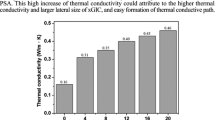Abstract
The chemical structure of resole phenolic prepolymer resin is difficult to be accurately described because it is a mixture composed of different polymerization degree structures. Limited by the knowledge of prepolymer resin structure, the cross-linking degree (CLD) of cured resin and the effects of structure on the ablation properties remain unclear. The objective of this work is to understand the relationship between prepolymer resin structure, CLD of cured resin, and performance. The quantitative characteristic structure of resole prepolymer and CLD of curing resin was proposed in this work based on the full understanding of the chemical structure. A fast and accurate identification method was provided for the quality conformity identification of mass production of resole prepolymer phenolic resin. A novel CLD characterization method for high cross-linking resole phenolic resin was proposed. The results showed that the ablation properties of resole phenolic resin are optimum when formaldehyde/phenol value of prepolymer is in the range of 1.20–1.46. This study may provide meaningful information to the understanding of the ablation mechanism of resole phenolic resin, which is a benefit for developing novel anti-ablation resin.










Similar content being viewed by others
References
Naderi A, Mazinani S, Ahmadi SJ, Sohrabian M, Arasteh R. Modified thermo-physical properties of phenolic resin/carbon fiber composite with nano zirconium dioxide. J Therm Anal Calorim. 2014;117:393–401.
Cheng H, Xue H, Hong C, Zhang X. Preparation, mechanical, thermal and ablative properties of lightweight needled carbon fibre felt/phenolic resin aerogel composite with a bird nest structure. Compos Sci Technol. 2017;140:63–72.
Zhao T, Ye H, Zhang L, Cai Q. Experimental investigation on the specific heat of carbonized phenolic resin-based ablative materials. Int J Thermophys. 2017;38:151.
Menapace C, Leonardi M, Secchi M, Bonfanti A, Gialanella S, Straffelini G. Thermal behavior of a phenolic resin for brake pad manufacturing. J Therm Anal Calorim. 2019;137:759–66.
Chen J, Zhang W, Liu J, Ge H, Tian M, Liu J, et al. Improved thermal stability of phenolic resin by graphene-encapsulated nano-SiO2 hybrids. J Therm Anal Calorim. 2019;135:2377–87.
Chen R, Xu X, Zhang Y, Lu S, Lo S. Characterization of ignition and combustion characteristics of phenolic fiber-reinforced plastic with different thicknesses. J Therm Anal Calorim. 2020;140:645–55.
Tonge LY, Hodgkin J, Blicblau AS, Collins PJ. Effects of initial phenolformaldehyde (pf) reaction products on the curing properties of pf resin. J Therm Anal Calorim. 2001;64:721–30.
King PW, Mitchell RH, Westwood AR, Rue DL. Structural analysis of phenolic resole resins. J Appl Polym Sci. 1974;18:1117–30.
Holopainen T, Alvila L, Rainio J, Pakkanen TT. IR spectroscopy as a quantitative and predictive analysis method of phenol-formaldehyde resol resins. J Appl Polym Sci. 1998;69:2175–85.
Rego R, Adriaensens PJ, Carleer RA, Gelan JM. Fully quantitative carbon-13 NMR characterization of resol phenol-formaldehyde prepolymer resins. Polymer. 2004;45:33–8.
Bandyopadhyay A, Valavala PK, Clancy TC, Wise KE, Odegard GM. Molecular modeling of crosslinked epoxy polymers: the effect of crosslink density on thermomechanical properties. Polymer. 2011;52:2445–52.
Hill LW. Calculation of crosslink density in short chain networks. Prog Org Coat. 1997;31:235–43.
Trick KA, Saliba TE. Mechanisms of the pyrolysis of phenolic resin in a carbon/phenolic composite. Carbon. 1995;33:1509–15.
Jiang H, Wang J, Wu S, Wang B, Wang Z. Pyrolysis kinetics of phenol-formaldehyde resin by non-isothermal thermogravimetry. Carbon. 2010;48:352–8.
Trick KA, Saliba TE, Sandhu SS. A kinetic model of the pyrolysis of phenolic resin in a carbon/phenolic composite. Carbon. 1997;35:393–401.
Ma W, Wang S, Cui JP, Zhang ST, Fan BC, He YZ. Thermal decomposition kinetic model of phenolic resin. Acta Phys Chim Sin. 2008;24:1090–4.
Costa L, Di Montelera LR, Camino G, Weil ED, Pearce E. Structure-charring relationship in phenol-formaldehyde type resins. Polym Degrad Stab. 1997;56:23–35.
Parker JA. The effects of molecular structure on the thermochemical properties of phenolics and related polymers. NASA TR R-276, Ames Research Center; 1967.
Fitzer E, Schäfer W. The effect of crosslinking on the formation of glasslike carbons from thermosetting resins. Carbon. 1970;8:353–64.
Hirano K, Asami M. Phenolic resins-100 years of progress and their future. React Funct Polym. 2013;73:256–69.
Chen ZQ, Zeng WJ, Chen YF, Li WK, Liu AH. Influence of F/P on structure and thermal property of phenolic resin. Key Eng Mater. 2012;500:98–103.
Hu XM, Zhao YY, Cheng WM. Effect of formaldehyde/phenol ratio (f/p) on the properties of phenolic resins and foams synthesized at room temperature. Polym Compos. 2015;36:1531–40.
Wang Y, Wang S, Bian C, Zhong Y, Jing X. Effect of chemical structure and cross-link density on the heat resistance of phenolic resin. Polym Degrad Stab. 2015;111:239–46.
Kissinger HE. Reaction kineticsin differential thermal analysis. Anal Chem. 1957;29:1702–6.
Ozawa T. A new method of analyzing thermogravimetric data. Bull Chem Soc Jpn. 1965;11:1881–6.
Wei H, Zhang Q, Li J, Li C, Li Z. Suggestion of the non-isothermal decomposition kinetic mechanism function for phenolic resin. Polym Mater Sci Eng. 2014;30:100–5.
Jiang H, Wang J, Wu S, Yuan Z, Hu Z, Wu R, et al. The pyrolysis mechanism of phenol formaldehyde resin. Polym Degrad Stab. 2012;97:1527–33.
Wang J, Jiang H, Jiang N. Study on the pyrolysis of phenol-formaldehyde (pf) resin and modified pf resin. Thermochim Acta. 2009;196:136–42.
Sobera M, Hetper J. Pyrolysis-gas chromatography-mass spectrometry of cured phenolic resins. J Chromatogr A. 2003;993:131–5.
Acknowledgements
The authors would like to acknowledge Science and Technology on Advanced Functional Composites Laboratory for funding the research under the Grant No. HTKJ2019KL703002. Thanks to Prof. Zhongping Li for his useful suggestions on the research of the paper.
Author information
Authors and Affiliations
Contributions
Methodology: H.H., L.L. Formal analysis and investigation: H.H., R.Y. Writing-original draft preparation: H.H. Writing-review and editing: H.H., Y.Z. Data collection and analysis: H.H., Y.Z. Funding acquisition: J.W. Supervision: Y.Y.
Corresponding author
Additional information
Publisher's Note
Springer Nature remains neutral with regard to jurisdictional claims in published maps and institutional affiliations.
Rights and permissions
About this article
Cite this article
Hu, H., Zhang, Y., Liu, L. et al. Effect of quantitative characteristic structure of resole phenolic prepolymer resin on thermal stability, pyrolysis behaviors, and ablation properties. J Therm Anal Calorim 146, 1049–1062 (2021). https://doi.org/10.1007/s10973-020-10096-0
Received:
Accepted:
Published:
Issue Date:
DOI: https://doi.org/10.1007/s10973-020-10096-0




